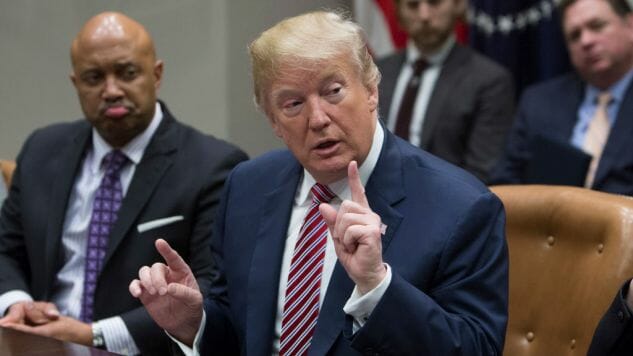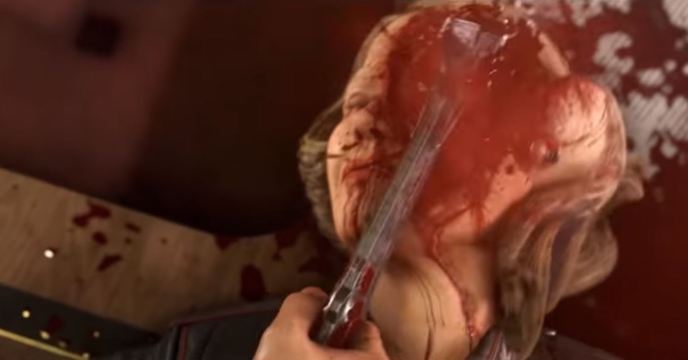Trump Blames Shootings on Games to Distract from the Gun Debate. Still, Some Games Are Too Graphic for Their Own Good.
Trump photo courtesy of Getty Images
Last week Donald Trump, who is somehow actually a president instead of another old man whose career was ruined by #MeToo, tried to shift the gun control debate onto a familiar distraction. During a school safety meeting last Thursday in the wake of the shooting at Marjory Stoneman Douglas High School in Florida, Trump argued that violent media should be blamed for the rise in school shootings. “I’m hearing more and more people say the level of violence on videogames is really shaping young people’s thoughts,” Trump was quoted as saying by the New York Times, with that first use of the word “people” probably referring to the aides who drilled into his brain that morning that he should blame videogames instead of easy access to guns.
The argument that games cause real life violence has been hashed over and dug up and put back down again several times over the last couple of decades. Multiple academic studies have found no direct link between the two (that same Times piece lists a few studies, if you want to check those out), although the American Academy of Pediatrics and American Academy of Child & Adolescent Psychiatry both take the stance that violent games can inspire violent behavior. The overwhelmingly vast majority of people who play violent videogames don’t turn into mass shooters, of course—if they did there’d be way more mass shootings than there already are in America. (Also, read this CNN piece for a quote from a survivor of the Stoneman Douglas shooting who plays first-person shooters and says he’d “never, ever dream” of doing anything like that in real life.) And the mass shooters who are big fans of violent videogames probably enjoy all other kinds of media that could also be unscientifically and unilaterally declared a factor by pro-gun activists, as violent movies and heavy metal often are.
With these comments Trump’s continuing a common line of disingenuous distraction espoused by the NRA, whose opinions on anything should basically be ignored by the world at large at this point. Blaming games for mass shootings, instead of the easy availability of the semiautomatic guns that make these shootings far too easy to perpetrate, is a tactic used to undercut the gun control debate that’s always reinvigorated whenever these tragedies happen. It’s a transparent deflection from the real issue, one that’s regularly put forth by the politicians and spokespeople who profit greatly from the NRA, and one driven almost entirely by money, both the money regularly funneled into election campaigns and PACs, and the massive amounts of money made every year by the gun industry. Simply put, it’s bullshit, and Trump and the NRA and the GOP know it’s bullshit, but they all keep repeating it anyway.
Still, though. Look at this:

That’s from the opening moments of Bioshock Infinite. It’s the first bit of violence seen in the game, and it’s a little ridiculous how gory it is. One guy’s head is split open by another’s blade, with blood, brains and bone splattering everywhere. Immediately after this the player kills the guy on the left, slicing into his jugular as torrents of blood cascade over the screen. This happens after an opening half-hour or so that could genuinely be described as majestic; that intro is easily the high point of the entire game, and it crashes as soon as that blood starts to flow.
